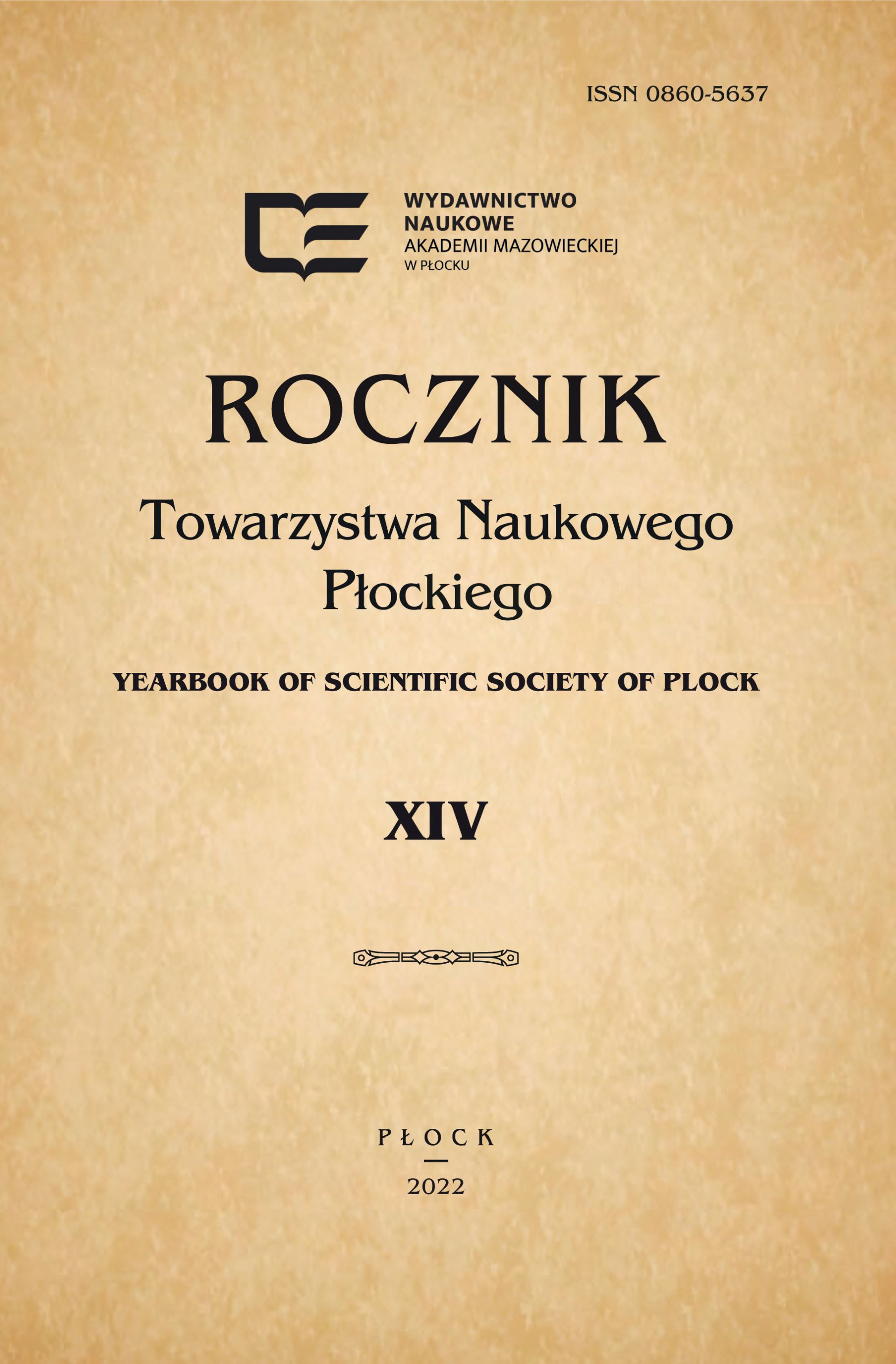Nonverbal yes and no in Poland and in Greece
DOI:
https://doi.org/10.19251/rtnp/2022.14(10)Keywords:
emblematic gestures, Polish gestures, Greek gestures, nonverbal confirmation / agreement, nonverbal negation / disagreement, nonverbal yes, nonverbal noAbstract
The text presents various means of expressing nonverbal confirmation (agreement) and negation (disagreement) used in the Polish and the Greek culture, along with the results of comparative research in this field. A range of head and hand gestures, facial expressions and paralingual elements have been described, as well as their context of use and meaning, and also the origin and functions of head nods and head shakes. The results of the research contradict a popular notion that Greeks show ‘yes’ and ‘no’ in a different or opposite way to other European nations, since the Greek nod is in fact the same as the Polish gesture. The text also presents the diversity and a wide range of meaning of the analysed gestures, and highlights a potential risk of misunderstanding or non-effective intercultural communication. Moreover, it has been attempted to explain the reason for the implementation of partially different patterns of nonverbal negation in the given cultures.
References
Antoniou-Kritikou, Ioanna (2008) Epikoinono sta ellinika. Athina: Grammata.
Archer, Dane (1997) Unspoken Diversity: Cultural Differences in Gestures. [W:] Qualitative Sociology Vol. 20(1), 79-105.
Axtell, Roger E. (1991) Gestures. The Do’s and Taboos of Body Language Around the World. New York, Chichester, Brisbane, Toronto, Singapore: John Wiley & Sons, Inc.
Birdwhistell, Ray (1970) Kinesics and Context: Essays on Bodily Motion Communication. Philadelphia: University of Pennsylvania Press.
Cavicchio, Federica, Sotaro Kita (2013) English/Italian Bilinguals Switch Gesture Parameters when they Switch Languages. [W:] Cognitive Science Vol. 35, https://escholarship.org/uc/item/6tp989dh (data dostępu: 18. 01. 2022).
Darwin, Karol ([1872] 1988) [The Expression of the Emotion in Man and Animals. London: John Murray.] O wyrazie uczuć u człowieka i zwierząt. Warszawa: PWN.
Efron, David ([1941] 1972) [Gesture and Environment: A Tentative Study of the Spatio-temporal and Linguistic Aspects of the Gestural Behavior of Eastern Jews and Southern Italians in New York City, Living Under Similar as Well as Different Environmental Conditions. New York: King’s Crown Press, Morningside Heights] Gesture, Race and Culture. The Hague, Paris: Mouton.
Eibl-Eibesfeldt, Irenäus (1973) The expressive behaviour of the deaf-and-blind born. [W:] M. von Cranach, I. Vine (red.), Social communication and movement. New York: Academic Press.
Eibl-Eibesfeldt, Irenäus (1987) Miłość i nienawiść. Warszawa: PWN.
Granström, B., House, D. (2006) Measuring and modelling audiovisual prosody for animated agents. [W:] Proceedings of Speech Prosody 2006, Dresden, https://www.speech.kth.se/prod/publications/files/1286.pdf (data dostępu: 07. 02. 2022),
https://www.isca-speech.org/archive_v0/sp2006/papers/sp06_117.pdf (data dostępu: 07. 02. 2022).
Gravano, Agustín, Stefan Benus, Hector Chavez, Julia Hirschberg, Lauren Wilcox (2007) On the role of context and prosody in the interpretation of “Okay”. [W:] Proceedings of the 45th Annual Meeting of the Association for Computational Linguistics 2007, Prague, https://www.researchgate.net/ publication/220874706_On_the_role_of_context_and_prosody_in_the_ interpretation_of_’okay’ (data dostępu: 02. 02. 2022).
Helweg-Larsen, Marie, Stephanie J Cunningham, Amanda Carrico, Alison M. Pergram (2004) To nod or not to nod: An observational study of nonverbal communication and status in female and male college students. [W:] Psychology of Women Quarterly 28, 358–362.
Hockey, Beth Ann (1993) Prosody and the role of okay and uh-huh in discourse. [W:] M. Bernstein (red.) Proceedings of ESCOL ‘92, 128-136, https://wenku.baidu.com/view/5d5c9dc458f5f61fb73666bc.html (data dostępu: 03. 02. 2022).
Jakobson Roman (1989) «Tak» i «nie» w mimice. [W:] Maria Renata Mayenowa (red.) W poszukiwaniu istoty języka 1. Wybór pism. Warszawa: PIW, 85-91.
Jarząbek, Krystyna, Antoni Cygan (1994) Gestykulacja i mimika: słownik. Katowice: Wydawnictwo Śląsk.
Johnson, Harold G., Paul Ekman, Wallace V. Friesen (1975) Communicative Body Movements: American Emblems. [W:] Semiotica Vol. 15, 335-353.
Karpiński, Maciej, Silvia Bonacchi (2014) Remarks about the use of the term ‘multimodality’. [W:] Journal of Multimodal Communication Studies
Kendon, Adam (1992) Some Recent Work from Italy on Quotable Gestures (‘Emblems’). [W:] Annual Review of Anthropology, Vol. 26, 109-128.
Kendon, Adam (2004) Gesture: Visible Action as Utterance. Cambridge: Cambridge University Press.
Kozak, Katarzyna (2007) Polska frazeologia gestu: Od informacji somatycznej do idiomu. [W:] Etnolingwistyka 19, 253–265.
Kraśnicka-Wilk, Izabela, Gembalczyk, Sonia (2018) Multimodalne TAK. [W:] Language, Mind, Culture, Society, 2, 60–80, https://doi.org/10.32058/LAMICUS-2018-002 (data dostępu: 18. 01. 2022).
Malisz Zofia, Maciej Karpiński (2010) Multimodal aspects of positive and negative responses in Polish task-oriented dialogues. [W:] Speech Prosody 2010, paper 888, https://www.isca-speech.org/archive/pdfs/speechprosody_2010/malisz10_speechprosody.pdf, (data dostępu: 20. 01. 2022).
Matsumoto, David, Hyisung C. Hwang (2013) Cultural Similarities and Differences in Emblematic Gestures. [W:] Journal of Nonverbal Behaviour Vol. 37(1), 1-27.
McNeill, David (2005) Gesture and Thought. Chicago: University of Chicago Press.
Morris, Desmond, Peter Collett, Peter Marsh, Marie O’Shaughnessy (1981) Gestures: Their Origin and Distribution. London: Triad Granada.
Morris, Desmond (1977) Manwatching: A field-guide to human behavior. London: Jonathan Cape Ltd.
Morris, Desmond (1994) Bodytalk: A World Guide to Gesture. London: Jonathan Cape Ltd.
Papas, William (1999) Instant Greek. How to Communicate in Greek as Quickly as You Can Twist Your Wrist!. Portland: Chetwynd Stapylton Inc.
Payrató, Lluís (1993) A Pragmatic View on Autonomous Gestures: A First Repertoire of Catalan Emblems. [W:] Journal of Pragmatics Vol. 20, 193-216.
Ružičková, Eva (2001) Picture Dictionary of Gestures. American, Slovak, Japanese and Chinese. Bratislava: Univerzita Kamenského.
Seyfeddinipur, Mandana, Marianne Gullberg (2014) From gesture in conversation to visible action as utterance. [W:] Mandana Seyfeddinipur, Marianne Gullberg (red.) From Gesture in Conversation to Visible Action as Utterance. Amsterdam, Philadelphia: John Benjamins Publishing Company, 1–12.
Sparhawk, Carol M. (1978) Contrastive Identificational Features of Persian Gesture. [W:] Semiotica Vol. 24, 49-86.
Szczepaniak, Agnieszka (2017) Gesty emblematyczne w międzykulturowej komunikacji niewerbalnej. Polsko-grecko-brytyjskie studium porównawcze i gestownik. Kalisz: Kaliskie Towarzystwo Przyjaciół Nauk, Wrocław: Uniwersytet Wrocławski, SWPS Uniwersytet Humanistyczno-Społeczny.
